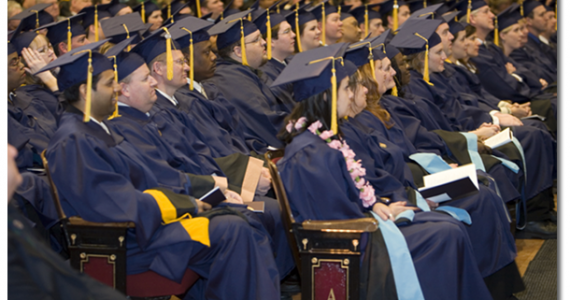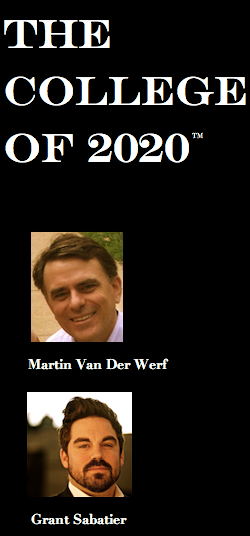I have a friend who used to be the brand manager for Kingsford charcoal. One day, he was asking his team: “Who is our competition?” His team piped up: Royal Oak? Store brands?
No, my friend replied. Our competition isn’t another charcoal. It’s the gas grill. Cooking out is a lifestyle choice, with all of kinds of positive feelings associated with it — time with friends, fun, fresh air. And our potential customers are switching to gas, and getting all those same benefits without ever purchasing our product again. To keep its customers, Kingsford had to talk about authenticity, smoky flavor, the benefits of the real grilling experience rather than the rather soul-less expedience of gas grills.
Similarly, I was talking with a marketer for a chain of grocery stores in St. Louis. Who was the competition? Not the other four significant chains in that market. Their competition, as they saw it, was the proliferation of places to buy groceries: Target, Wal-Mart, every gas station with a mini-mart that sold milk and hamburger buns. The grocery store’s position was being diluted by all the other ways customers could get the same products while making fewer stops.
These are just examples of different ways of thinking about your markets. So, colleges and universities, who is your competition for students?
Is it the peer schools or neighboring institutions you have always competed against? Undoubtedly, yes, but to a lesser degree all the time. As the competitive landscape changes in higher education, students are not so much comparing colleges against one another as they are thinking about how college fits into their lifestyles. In a world of many choices, convenience is an ever-more-important factor.
In a previous blog post, we posited that when colleges take to heart that the competition in higher education has changed forever, it will allow them to think about their various operations in new and innovative ways. The competition is changing all the time — to really understand how and why students might think to come to your college, you need to think of college as a transaction in the same way they do.
The changing needs and desires of student for access to college courses will only grow in coming years. More students will attend college part-time, online, take courses from multiple universities, and jump into and out of college. Students simultaneously will want to be enrolled in some courses online and others in person.
For the sake of stability and planning, it will be imperative for most colleges to continue to identify a core of students who will attend college full-time and make use of the faculty, classrooms, libraries, and other facilities that colleges have created. However, this more itinerant population of students must be catered to as well if a college is to be seen as progressive and flexible, qualities that will be increasingly in demand.
Colleges need to remember who their competition is, and realize that they are competing for a student’s attention with dozens, perhaps hundreds, of other options. The first job for traditional colleges is to drill down and define what makes them different, and is a unifying theme for going forward. (More on this in the next blog post on Marketing)
Perhaps most importantly, colleges need to get better at finding students who are a good fit, and are likely to stay at the college they choose. Many smaller colleges are in the habit of paying tens of thousands of dollars to consulting and marketing firms who find potential students for them. But as many as three-quarters of those students don’t return for a second year. And the process of churning up a new class starts all over again. If a good student fit could be identified in the first place, focus could shift to finding out what students need to succeed and then doing it, rather than the overwhelming focus on the pipeline of students.
In the next decade, the number of high school graduates will essentially stay the same. So colleges need to find new student markets to tap:
- Reach out to minority students. Research shows that, at some point, probably just after 2020, minority students will outnumber white students for the first time. The fastest-growing minority group is Hispanics, but they disproportionately attend community colleges and for-profit institutions. The major reason is that Hispanics are frequently less-prepared for college-level work. High-school graduation rates are much lower for members of every minority group except Asian-Americans. Colleges need to reach out to these groups in many ways, if ways that emphasize success. Could colleges explicitly offer a five-year program, in which the first year is entirely remedial?
- Adult learners. Through 2018, projections show that the population of college students age 18 to 24 will increase by 9 percent, but the population of students age 25 to 34 will increase by 25 percent, and for students older than 35, by 12 percent. How much is your institution doing to target adult students, and what more could it be doing? Adult students usually attend part-time and often don’t come on campus at all. So they are not much of a stress on campus facilities. Yet many colleges are startlingly insensitive to them. Colleges don’t give them a break on tuition, don’t have counseling programs that address the unique needs to adult students, or even give them places to store belongings or meet similar-age students when they do come to campus. Colleges need to think how they are reaching out to this increasingly important constituency.
Perhaps most importantly, colleges need to really go deep inside themselves and think as a community about what their competitive advantages are, what they do especially well, and how can they communicate that to their potential students.
The market for college educations has fundamentally changed, and, increasingly, so has the way your customers think about how they will attain it. Again, colleges, who are you? What makes you special? In a world full of gas, what’s your charcoal?
Next post: Marketing
Incoming search terms:
- advantages of online admissions
- ipad too expensive for school infographic
- student education2020
- student education 2020
- Online Education “Add Guest Post”
- online education publications guest post
- no college with a good fit
- matthew pearson beloit college
- infographic life cycle
- guest post for online education blog


